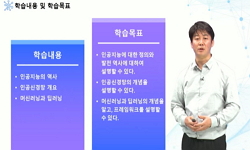재고관리의 불확실성과 딜레마는 재고가 가지는 양면성에서 비롯된다. 일반적으로, 관리자는 재고 보유를 통해 미래의 수익을기대할 수 있지만, 만약 적정 시점까지 매출로 전환되지 못한...
http://chineseinput.net/에서 pinyin(병음)방식으로 중국어를 변환할 수 있습니다.
변환된 중국어를 복사하여 사용하시면 됩니다.
- 中文 을 입력하시려면 zhongwen을 입력하시고 space를누르시면됩니다.
- 北京 을 입력하시려면 beijing을 입력하시고 space를 누르시면 됩니다.

자본비용 분석과 FHP를 활용한 재고품목의 다기준 중요도 평가 프레임워크 = A Multi-Criteria based Evaluation Framework for Importance of Inventory Items - Focusing Analysis of Capital Costs and Fuzzy Analytic Hierarchy Process -
한글로보기https://www.riss.kr/link?id=A107393234
- 저자
- 발행기관
- 학술지명
- 권호사항
-
발행연도
2021
-
작성언어
-
-
주제어
다기준 평가 ; 재고관리 ; 기대손익 ; 자본비용 ; 프레임워크 ; Multi-Criteria Evaluation ; Inventory Management ; Profit and Loss ; Capital Costs ; FHP ; Framework
-
KDC
320
-
등재정보
KCI등재
-
자료형태
학술저널
- 발행기관 URL
-
수록면
1-13(13쪽)
-
KCI 피인용횟수
0
- DOI식별코드
- 제공처
- 소장기관
-
0
상세조회 -
0
다운로드
부가정보
국문 초록 (Abstract)
재고관리의 불확실성과 딜레마는 재고가 가지는 양면성에서 비롯된다. 일반적으로, 관리자는 재고 보유를 통해 미래의 수익을기대할 수 있지만, 만약 적정 시점까지 매출로 전환되지 못한다면 이의 보유비, 금융비, 잔존가치 하락과 처분비용까지 예기치 못한 손실을 떠안을 수도 있기 때문이다. 그뿐만 아니라 사회수요변화, 기술 수준 변화, 공급자 변화전략 등과 같은 외부효과 리스크역시 효율적 재고관리의 장애요인이다. 따라서 효율적인 재고관리를 위해서는 이 같은 재고의 양면성과 외부효과 리스크를 충분히 이해하고 이를 합리적인 형태로 평가하기 위한 방안을 고민할 필요가 있다. 본 연구에서는 재고의 양면성을 정량적/정성적 중요도 측면에서 고려하기 위한 다기준 평가 프레임워크를 제안하였다. 이를 위해 정량적 기대수익과 손실을 동시에 고려할 수 있는재고의 경제적 가용 개념을 도입하는 한편, 정성적인 평가문제를 위해 FHP(Fuzzy Analytic Hierarchy Process)를 활용하였다. 또한, 사례 및 예제에서는 임의의 데이터와 전문가집단의 설문을 바탕으로 10개 품목에 대한 중요도 산출과 4분위 그룹 분류를 통해 제안한 프레임워크의 효용성을 살펴보았다. 제안한 프레임워크를 통해 단편적인 기준에 의한 재고 평가의 한계를 극복하고 재고품목이 가지는 기대손익과 정성적인 중요도를 통합 평가할 수 있게 될 것으로 기대된다.
다국어 초록 (Multilingual Abstract)
This paper discusses a multi-criteria-based framework to evaluate inventory items. It mainly focuses on the question of what kind of factors influence on the items and how to evaluate them. For evaluating and classifying the inventory items, we propos...
This paper discusses a multi-criteria-based framework to evaluate inventory items. It mainly focuses on the question of what kind of factors influence on the items and how to evaluate them. For evaluating and classifying the inventory items, we propose a new framework that involves following two points. First, an efficient inventory management allows firms to react quickly to customer demands with low-cost under a lots of uncertainties and risks, so that the inventory items should be evaluated d from various factors and external effects. Most of quantitative decisions for inventory management are closely related to cost, while qualitative factors have influence on availability of the inventory items. For these reason, we design an evaluation framework based on quantitative factors focusing on expected profit and loss, as well as qualitative factors with respect on the availability. Our approach is quite useful, because It has been shown in most studies on this subject that an inventory management mainly focuses on the cost, whereas a structural ambiguity of inventory has been considered in our approach. Especially, in order to formulate the expected loss, we define and adopt a new process based on opportunity cost of inventory item which comes from economic available life and a cash flow with respect to capital cost of the item. It can be one of the most reasonable standards to solve the problems because it often considered for an economical use focusing minimized total cost, as the first priority in the business management. And for qualitative evaluation, we uses the FHP(Fuzzy Hierarchy Process) which is developed based on AHP and fuzzy logic theory. It can suggest useful and reasonable approaches for multiple criteria decision-making in fuzzy environments. We also demonstrated an applicability of the proposed framework can be on of the efficient tools to manage inventory items from the viewpoint of economic use, by numerical examples.
목차 (Table of Contents)
- Ⅰ. 서 론 Ⅱ. 선행 연구 Ⅲ. 재고품목의 중요도 평가 프레임워크 Ⅳ. 사례를 통한 프레임워크 검증 Ⅴ. 결론 및 향후 과제 참고문헌
- Ⅰ. 서 론 Ⅱ. 선행 연구 Ⅲ. 재고품목의 중요도 평가 프레임워크 Ⅳ. 사례를 통한 프레임워크 검증 Ⅴ. 결론 및 향후 과제 참고문헌
참고문헌 (Reference)
1 정기호, "한국기업의 공급사슬관리 전략의 적합성에 관한 실증연구" 한국경영학회 34 (34): 219-243, 2005
2 조은정, "하이테크 신제품 개발의 R&D와 마케팅 인터페이스에 관한 탐색적 연구" 숙명여자대학교 테크노경영대학원 2007
3 김관영, "투자영향분석을 기반으로 한 지식경영 평가방법론 프레임워크" 한국지식경영학회 9 (9): 117-128, 2008
4 박재훈, "컨텍스트 의존 DEA를 활용한 다기준 ABC 재고 분류 방법" 한국산업경영시스템학회 33 (33): 69-78, 2010
5 추봉성, "재고의 경제적 가용수명을 고려한 환매전략" 한국물류학회 29 (29): 53-61, 2019
6 추봉성, "재고의 경제적 가용수명과 기회비용을 고려한 ABC 재고분류" 한국유통경영학회 22 (22): 145-156, 2019
7 안재현, "다속성 효용이론을 활용한 소비자 선호조사" 한국경영정보학회 18 (18): 1-20, 2008
8 홍동표, "국내 인터넷 쇼핑 시장 분석 및 전망" 정보통신정책연구원 1-48, 2004
9 추봉성, "공급사슬의 리스크 분석에 관한 연구 - 연결중심성과 수급불균형을 중심으로-" 한국물류학회 28 (28): 1-8, 2018
10 최도석, "계층퍼지분석법(HFP)을 이용한 크루즈 터미널 입지 선정에 관한 연구" 한국해양공학회 19 (19): 56-65, 2005
1 정기호, "한국기업의 공급사슬관리 전략의 적합성에 관한 실증연구" 한국경영학회 34 (34): 219-243, 2005
2 조은정, "하이테크 신제품 개발의 R&D와 마케팅 인터페이스에 관한 탐색적 연구" 숙명여자대학교 테크노경영대학원 2007
3 김관영, "투자영향분석을 기반으로 한 지식경영 평가방법론 프레임워크" 한국지식경영학회 9 (9): 117-128, 2008
4 박재훈, "컨텍스트 의존 DEA를 활용한 다기준 ABC 재고 분류 방법" 한국산업경영시스템학회 33 (33): 69-78, 2010
5 추봉성, "재고의 경제적 가용수명을 고려한 환매전략" 한국물류학회 29 (29): 53-61, 2019
6 추봉성, "재고의 경제적 가용수명과 기회비용을 고려한 ABC 재고분류" 한국유통경영학회 22 (22): 145-156, 2019
7 안재현, "다속성 효용이론을 활용한 소비자 선호조사" 한국경영정보학회 18 (18): 1-20, 2008
8 홍동표, "국내 인터넷 쇼핑 시장 분석 및 전망" 정보통신정책연구원 1-48, 2004
9 추봉성, "공급사슬의 리스크 분석에 관한 연구 - 연결중심성과 수급불균형을 중심으로-" 한국물류학회 28 (28): 1-8, 2018
10 최도석, "계층퍼지분석법(HFP)을 이용한 크루즈 터미널 입지 선정에 관한 연구" 한국해양공학회 19 (19): 56-65, 2005
11 Fisher, M. L., "What is the Right Supply Chain for Your Product?" 105-117, 1997
12 Eroglu, C., "The Effect of Environmental Dynamism on Returns to Inventory Leanness" 32 (32): 347-356, 2014
13 조성구, "TOPSIS 모형을 이용한 ABC분석의 개선에 관한 연구" 5 (5): 19-27, 1992
14 Chen, Z., "Sustainable Manufacturing Production-Inventory Decision of Multiple Factories with JIT Logistics, Component Recovery and Emission control" 128 : 356-383, 2019
15 Shabani, A., "Reliable Estimation of Suppliers’ Total Cost of Ownership : An Imprecise Data Envelopment Analysis Model with Common Weights" 87 : 57-70, 2019
16 Satapathy, B. K., "Performance of Friction Materials Based on Variation in Nature of Organic Fibres Part 2, Optimisation by Balancing ad Ranking Using Multiple Criteria Decision Model (MCDM)" 257 (257): 585-589, 2004
17 Capkun, V., "On the Relationship between Inventory and Financial Performance in Manufacturing Companies" 29 (29): 789-806, 2009
18 Lolli, F., "New AHP-based Approaches for Multi-Criteria Inventory Classification" 156 : 62-74, 2014
19 Flores, B. E., "Multiple Criteria ABC Analysis" 6 (6): 38-46, 1986
20 Balaji, K., "Multicriteria Inventory ABC Classification in an Automobile Rubber Components Manufacturing Industry" 17 : 463-468, 2014
21 박재훈, "Multi-Criteria ABC Inventory Classification Using the Cross-Efficiency Method in DEA" 대한산업공학회 37 (37): 358-366, 2011
22 Guvenir, H. A., "Multi Criteria Inventory Classification using Genetic Algorithm" 105 (105): 29-37, 1998
23 Flores, B. E., "Management of Multi Criteria Inventory Classification" 16 (16): 71-82, 1992
24 Yang, L., "Integrated Multi-Period Dynamic Inventory Classification and Control" 189 : 86-96, 2017
25 Kadzinski, M., "Integrated Framework for Preference Modeling and Robustness Analysis for Outranking-based Multiple Criteria Sorting with ELECTRE and PROMETHEE" 352 : 167-187, 2016
26 윤대근, "Fuzzy AHP Evaluation for Performance of Container Shipping Companies in Vietnam (Developing on the Model of Previous Study for the Domestic Lines)" 한국항해항만학회 42 (42): 365-370, 2018
27 Balakrishan, R., "Financial Benefits from JIT Adoption : Effects of Customer Concentration and Cost Structure" 71 (71): 183-205, 1996
28 김종일, "ERP 내재화 평가 프레임워크에 관한 연구" 한국IT서비스학회 16 (16): 77-97, 2017
29 Keeney, R. L., "Decisions with Multiple Objectives : Preference and Value Tradeoffs" John Wiley & Sons 1976
30 Partovi, F. Y., "Classifying Inventory using an Artificial Neural Network Approach" 41 (41): 389-404, 2002
31 Benmoussa, K., "AHP-based Approach for Evaluating Ergonomic Criteria" 32 : 856-863, 2019
32 Ramanathan, R., "ABC Inventory Classification with Multi-criteria using Weighted Linear Optimization" 33 (33): 695-700, 2006
33 Torabi, S. A., "ABC Inventory Classification in the Presence of Both Quantitative and Qualitative Criteria" 63 (63): 530-537, 2012
34 Wei, S., "A Supplier-selecting System Using a Neural Network" IEEE 468-471, 1997
35 Douissa, M. R., "A New Model for Multi-Criteria ABC Inventory Classification : PROAFTN Method" 96 : 550-559, 2016
36 Douissa, M. R., "A New Model for Multi-Criteria ABC Inventory Classification : PROAFTN Method" 96 : 550-559, 2016
37 Hadi-Venchen, A., "A Fuzzy AHP-DEA Approach for Multiple Criteria ABC Inventory Classification" 38 (38): 3346-3352, 2011
동일학술지(권/호) 다른 논문
-
COVID-19로 인한 소비자의 지각된 불안감과 소비자 혁신 성향이 대형마트 셀프계산대 이용만족 및 지속적 이용의도에 미치는 영향
- 한국물류학회
- 이운영(Lee, Woon-Young)
- 2021
- KCI등재
-
- 한국물류학회
- 이철성(Lee, Chul-Sung)
- 2021
- KCI등재
-
- 한국물류학회
- 정성태(Jung, Sung-Tae)
- 2021
- KCI등재
-
- 한국물류학회
- 진문걸(Chen, Wen-Jie)
- 2021
- KCI등재
분석정보
인용정보 인용지수 설명보기
학술지 이력
| 연월일 | 이력구분 | 이력상세 | 등재구분 |
|---|---|---|---|
| 2027 | 평가예정 | 재인증평가 신청대상 (재인증) | |
| 2021-01-01 | 평가 | 등재학술지 유지 (재인증) |  |
| 2018-01-01 | 평가 | 등재학술지 유지 (등재유지) |  |
| 2015-01-01 | 평가 | 등재학술지 유지 (등재유지) |  |
| 2011-01-01 | 평가 | 등재학술지 유지 (등재유지) |  |
| 2009-01-01 | 평가 | 등재학술지 유지 (등재유지) |  |
| 2006-01-01 | 평가 | 등재학술지 선정 (등재후보2차) |  |
| 2005-01-01 | 평가 | 등재후보 1차 PASS (등재후보1차) |  |
| 2003-01-01 | 평가 | 등재후보학술지 선정 (신규평가) |  |
학술지 인용정보
| 기준연도 | WOS-KCI 통합IF(2년) | KCIF(2년) | KCIF(3년) |
|---|---|---|---|
| 2016 | 1.19 | 1.19 | 1.09 |
| KCIF(4년) | KCIF(5년) | 중심성지수(3년) | 즉시성지수 |
| 1.05 | 0.99 | 1.114 | 0.31 |




 스콜라
스콜라







